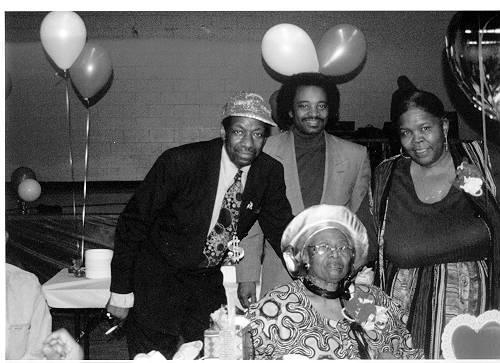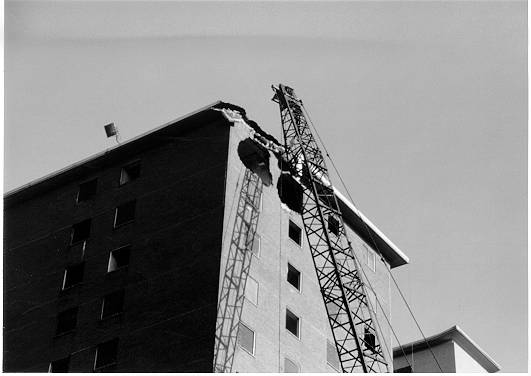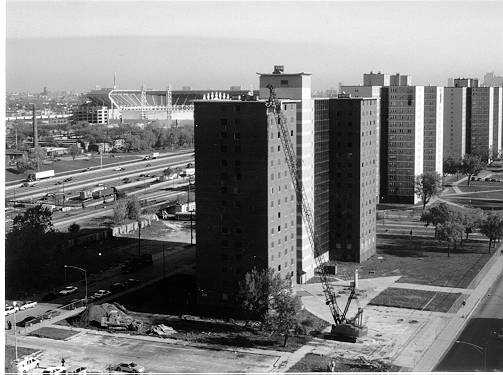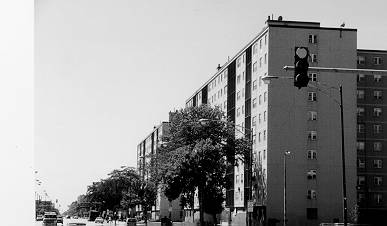I recently interviewed Artensa Randolph, who has been the chairperson of the Central Advisory Council for two decades. I talked to Randolph, 81, about H.R. 2, a new congressional bill that would require residents to volunteer 8 hours every month and would make other changes in residents’ lives.

"Under this new regime, these are the worst times that we have ever had. We have no one that really listens to our complaints." -Central Advisory Council President Artensa Randolph (pictured sitting).
“I don’t care for this H.R. 2 at all. We had meetings with some of the congressmen and I felt real elated to have the congressmen come to us. Which was Congressman Danny Davis, Congressman Bobby Rush, and Congressman Jesse Jackson Jr.
“The congressmen came to us to explain this H.R. 2. Congressman Jesse Jackson Jr. said he was going to add some amendments.”
Randolph said her staff had examined H.R. 2 and also did not like it. Randolph said that we residents have been volunteers all of our life.
“I don’t know what they mean about volunteering,” Randolph said. “They will not take me back into slavery. We couldn’t do anything, but do what – I hate to say it – the white folks told us to do but that day is out.
“I’m not going backwards and to volunteer to live in public housing, and we don’t have the luxury or anything that we need or want. Then they have people working in public housing.”
Randolph also was worried about what will happen to CHA employees.
“Then what will we do, knock them out of their jobs. Then everyone will be homeless and I’m not going to do it. If the residents want to follow me, we are not going to volunteer because I don’t have to stay here. That’s nothing more than a sophisticated depression and I’m not going for it.
Randolph said there are many role models in public housing, including Henry Horner Local Advisory Council President Mamie Bone, former Ida B. Wells LAC President Helen Finner and ABLA LAC President Deverra Beverly. 1971. Randolph said these role models and many other residents already volunteer much of their time but it would be wrong to force them to volunteer.
“They can’t make me get up and volunteer doing the people’s jobs that they have hired. I’m not going over there taking people’s jobs.
“So I’ll volunteer on my own time. Whatever I want to do, but they can’t make me do anything.”
“About the jobs for this program, no one has come out and said this is what we want you to volunteer for.”
Randolph said she’s very happy with the confidence residents have in her and the CAC. But Randolph said she was upset with the current heads of CHA, who took over the agency in 1995.
“Under this new regime, these are the worst times that we have ever had. We have no one that really listens to our complaints.”
Randolph said she wants a new board of commissioners. The old board oversaw the operations of CHA but was dissolved before the current regime came in.
“We don’t have anyone to go to and help us resolve some of these problems. So this is what I’m fighting for is to get a commissioners board back. When this happens, I’m going to resign and go into something else.
Randolph does sit on the Executive Advisory Council but she feels it doesn’t really help residents.
“We do have what we call an Advisory Council….but this Advisory Council to me, and I say it all the time, it’s for the birds.”
Randolph blamed the mayor for not stepping in to stop the board of commissioners from being dissolved.
“I don’t know what happened to Mayor Daley. I don’t know what he’s afraid of for he has not come out like he should.”
I asked Randolph whether there was any affordable housing available for residents displaced by demolition.
“About the affordable housing, today they say one thing and tomorrow it’s another.
“(Former CHA Executive Director) Vince Lane said that some of the developments have got to come down. But the only thing I hate is there won’t be any replacement housing and this is what I’m fighting for. But it seems like some of the members of the Central Advisory Council have forgotten what he (Vince Lane) said to the council.
“Sometimes, they (CHA and the residents) just let the buildings run down. They had a foresight; they didn’t try to do anything to fix them up. So they had to get in bad condition and then they tell me so much money…was needed to do the units. But I don’t know if it’s true or not. No one has come to me to say this is how much money it takes to do a unit. So now they’re tearing down but not rebuilding.
“Mr. Lane said that there is land all around where you could build these homes and then let the people move in, then demolish where you were living, because everyone wants to remain in their own neighborhood. No one wants to go out in the suburbs where the water is destroying everything.
“They think that we don’t have sense enough to see all of this but they want to put us out there. No one wants us out there so I don’t feel comfortable going where I’m not wanted.
“Affordable housing is our right. Some people think we live here and don’t pay any rent. We’re paying our just dues. While living in public housing, it should be decent and sanitary and a safe place to live. It was when they were just built in 1937 but now it’s different. It’s not safe, it’s not decent, It’s just a place to live.
Again I say it’s not like it used to be but through the years, I don’t know what happened.
In general, Randolph said conditions are worse for residents than in the past.
“It’s bad living for us now. We’re afraid for our lives. We don’t have enough security. Gangs have just taken over but I remember when Mayor Daley was the (Cook County) state’s attorney. We met with him and he said, ‘You all better get yourselves together because eventually the gangs are going to take over your apartment.’”
“We never heard that so we just didn’t believe him (Mayor Daley) but I swear he told the truth. Gangs have just taken over. Senior housing and family but it’s more in family housing but I don’t think that senior housing has enough security. They are still cutting back. So it will be only one security officer for two buildings.”
Randolph doesn’t agree with H.R. 2 and she is really trying to protect the residents.


First Strike--The wrecking ball knocked the first bricks out of the Robert Taylor Himes on May 23, when CHA started the demolition of the 16-story building at 3919 S. Federal St. The building had been vacant for almost a year. CHA sas not yet determined what will be built on the site.







